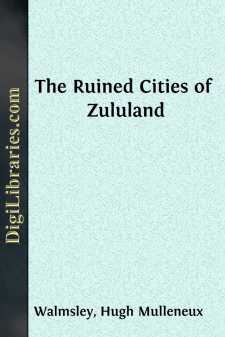Categories
- Antiques & Collectibles 13
- Architecture 36
- Art 48
- Bibles 22
- Biography & Autobiography 813
- Body, Mind & Spirit 142
- Business & Economics 28
- Children's Books 15
- Children's Fiction 12
- Computers 4
- Cooking 94
- Crafts & Hobbies 4
- Drama 346
- Education 46
- Family & Relationships 57
- Fiction 11828
- Games 19
- Gardening 17
- Health & Fitness 34
- History 1377
- House & Home 1
- Humor 147
- Juvenile Fiction 1873
- Juvenile Nonfiction 202
- Language Arts & Disciplines 88
- Law 16
- Literary Collections 686
- Literary Criticism 179
- Mathematics 13
- Medical 41
- Music 40
- Nature 179
- Non-Classifiable 1768
- Performing Arts 7
- Periodicals 1453
- Philosophy 64
- Photography 2
- Poetry 896
- Political Science 203
- Psychology 42
- Reference 154
- Religion 513
- Science 126
- Self-Help 84
- Social Science 81
- Sports & Recreation 34
- Study Aids 3
- Technology & Engineering 59
- Transportation 23
- Travel 463
- True Crime 29
The Ruined Cities of Zululand
Description:
Excerpt
Preface.
No one ever reads prefaces now-a-days; why, therefore, should I write one? may be fairly asked. Simply, I reply, to tell the reader that the tale imperfectly related in these volumes is not a mere work of fiction. It is based on a document sent to me by my brother, to whom I have dedicated this work, and who has for many years been a resident of the frontiers of Zulu Land.
The paper alluded to was transmitted by me, according to my brother’s desire, to His Imperial Majesty the Emperor of the French, together with a map of Zulu Land, which had been exhibited in the Natal section of the great Paris Exhibition of 1867. Both were graciously accepted and acknowledged by His Imperial Majesty.
The country traversed by the daring men, whose adventures are related in the following pages, is still to be explored. The ruins of the Fort of Sofala, even now, lie buried in the sand, on the beach of the far away Indian Ocean. The Arabs still search there for the smelted lumps of gold, buried or lost by those of whose existence no other trace remains.
The mysterious slabs still exist, encrusted with the dirt and grime of ages, on the mountain land of Gorongoza, and should my tale induce any adventurous spirit to make an attempt to clear away the veil of mystery which yet shrouds the remains of the Ruined Cities of Zulu Land, I can only refer him to Captain Walmsley, from whom the primary information contained herein was first gleaned, before whom the Missionary’s depositions were made, and who, for more than fifteen years of his life, has well and honourably filled the difficult and dangerous position of Government Agent, Magistrate, and Resident on the wild frontier of savage Zulu Land.
Bellary Fort.
There are few hotter places, and few more unhealthy ones, among our Indian up-country stations than Bellary, in the Madras Presidency, garrisoned in the year 1856 by Her Majesty’s 150th Regiment of Infantry. Let the reader imagine the lines of a fort drawn round a bare sugar-loaf hill, on which an Indian sun pours its rays for months. Thoroughly heated by this process of roasting, the arid rock gives out all night the caloric absorbed during the day, and a three years’ residence in the Fort of Bellary, such as had been passed by the officers and men of the 150th Regiment, was about equivalent to the same period in a baker’s oven. Years passed, and the English Government had at last perceived that it was madness to keep troops within the lines of the old fort when a rich and well-timbered plain lay around it. Barracks had been built outside; and about three-quarters of a mile distant from the main gate of Bellary, white bungalows, with their green verandahs and their well-kept compounds, lay scattered here and there among the trees, while far away, under the moon’s rays, on the night when our tale opens, a beautiful one in December, stretched the rich plain, with its piles of rock rising like huge black molehills here and there, giving welcome shelter to the wild-cats, jackals, and hyenas, whose cries might be heard from time to time ringing over the plain....


